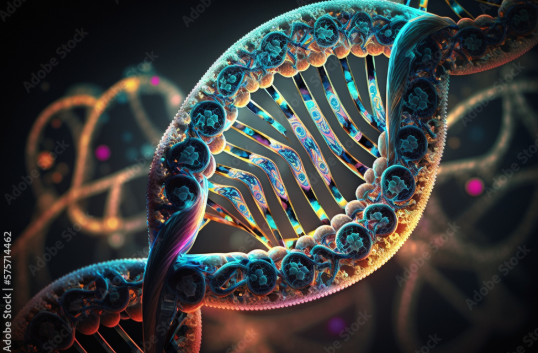By Snigdha Chakravarti
What if there was a possibility to eliminate human diseases like brain disorders or cancer? What if researchers could control gene expression in mammalian cells to get rid of gene defects? This is where AI DNA regulatory sequences come into play. Dr. Robert Fromel, a researcher who studied AI generated DNA at the Center for Genomic Regulation in Barcelona, explained how using this tool could provide “new ways of giving instructions to a cell” and direct the cell to behave and develop in a specific way with “unprecedented accuracy.” In essence, customization of synthetic DNA with artificial DNA regulatory sequences would be able to regulate the activity of genes in specific cells. However, one lingering question remains: how is an AI model able to generate these favorable patterns in DNA sequences with such a vast amount of genetic information?
A large quantity of data is needed to build this AI model along with countless experiments and studies on enhancers (the portion of the gene that turns it on or off) and transcription factors (proteins that regulate gene expression). Five years since the start of this project, the AI model has a humongous enhancer library consisting of 64,000 enhancers and binding sites for 38 transcription factors. Therefore, AI generated enhancers can now induce the exact gene expression patterns needed by specific cells. For example, while some enhancers activate a specific gene in one cell type, they may not activate this same gene in a different cell type; this displays their ability to modulate gene activators and directly switch a gene on or off. Most importantly, this allows for customization of gene expression, ensuring a higher degree of favorable expression.
Another concept explored through this AI model is negative synergy, where combinations of specific enhancers work together to turn off a gene. Individually, each enhancer can turn on the gene, but when multiple enhancers are utilized, they can hit the off switch for that same gene. The profound impacts of synthetic enhancers (not found in nature) and negative synergy allows AI models to measure the regulation of gene activity in order to create new on and off outcomes.
Lars Velten, a senior author in the study of the AI model, compared the creation of novel gene expression patterns to “a language model for biology.” Velten went on to explain how it was crucial to “understand the language cells speak” in order to “decipher these grammar rules for enhancers so that we [the researcher team] can create entirely new words and sentences.” As a result of the higher extent of variability in gene expression through this model, protein design is advanced too, allowing for different enzymes and antibodies to be made. Due to this, treatments like gene therapy (modification of genes by “correcting” them to treat or prevent a particular disease) can better regulate activity of certain genes in cells. In this way, the side effects of gene therapy are reduced and the efficacy of gene refinement increases for the patient. On the other hand, the modification of a particular gene could negatively impact healthy cells through unnecessary modification of their DNA. Through the development of a system called CODA, or Computational Optimization of DNA Activity, this problem has been combated. CODA makes gene therapy inactive in healthy cells to limit the treatment to impact only abnormal cells. This has especially proven useful for brain, metabolic, and blood disorders.
AI DNA models seem like a stone’s throw away from treating some of the most prominent diseases like sickle cell anemia, cancer, hemophilia, and muscle dystrophy. By being able to alter gene expression in specific cells, the possibility of a perfect, genetically-favorable outcome unfolds. It is also important to remember, though, that there are limitations to the model, as Dr. Ryan Tewhey, a co-senior author of the study, warns: “Combatting computational models with large-scale experimental approaches is a powerful strategy. However, the models are only as good as the data they learn from. By validating findings, we can quickly identify where improvements can be made.”

